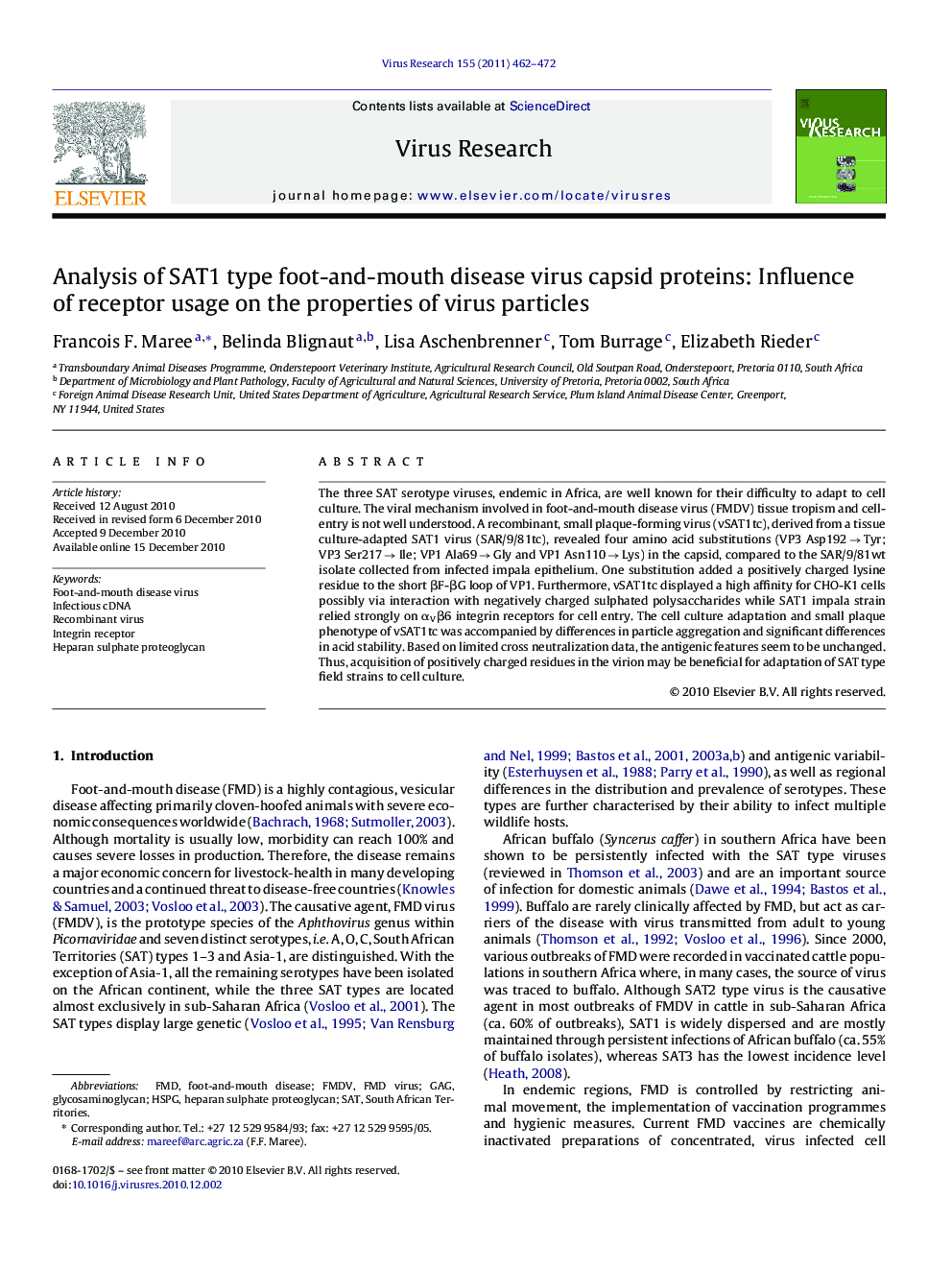| کد مقاله | کد نشریه | سال انتشار | مقاله انگلیسی | نسخه تمام متن |
|---|---|---|---|---|
| 3429444 | 1228249 | 2011 | 11 صفحه PDF | دانلود رایگان |

The three SAT serotype viruses, endemic in Africa, are well known for their difficulty to adapt to cell culture. The viral mechanism involved in foot-and-mouth disease virus (FMDV) tissue tropism and cell-entry is not well understood. A recombinant, small plaque-forming virus (vSAT1tc), derived from a tissue culture-adapted SAT1 virus (SAR/9/81tc), revealed four amino acid substitutions (VP3 Asp192 → Tyr; VP3 Ser217 → Ile; VP1 Ala69 → Gly and VP1 Asn110 → Lys) in the capsid, compared to the SAR/9/81wt isolate collected from infected impala epithelium. One substitution added a positively charged lysine residue to the short βF-βG loop of VP1. Furthermore, vSAT1tc displayed a high affinity for CHO-K1 cells possibly via interaction with negatively charged sulphated polysaccharides while SAT1 impala strain relied strongly on αVβ6 integrin receptors for cell entry. The cell culture adaptation and small plaque phenotype of vSAT1tc was accompanied by differences in particle aggregation and significant differences in acid stability. Based on limited cross neutralization data, the antigenic features seem to be unchanged. Thus, acquisition of positively charged residues in the virion may be beneficial for adaptation of SAT type field strains to cell culture.
Journal: Virus Research - Volume 155, Issue 2, February 2011, Pages 462–472